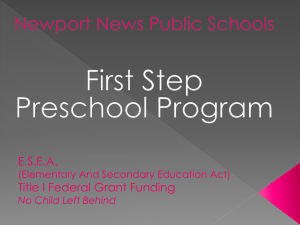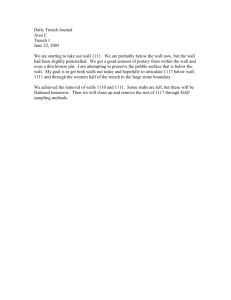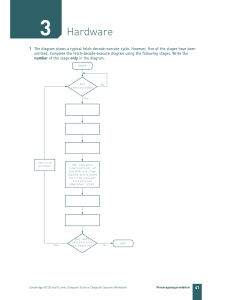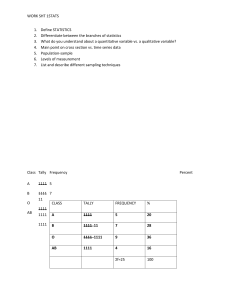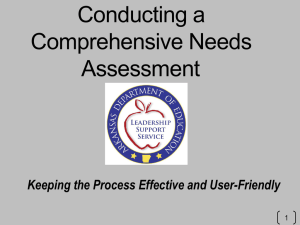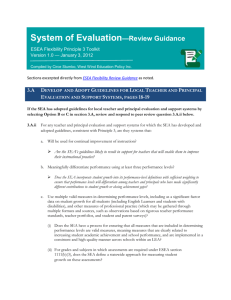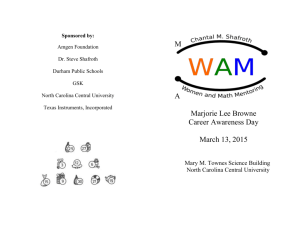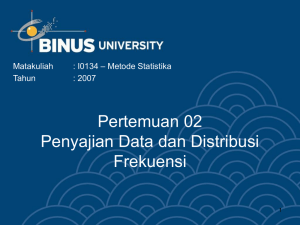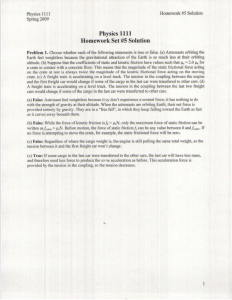Notification of Title I program at KMS
advertisement
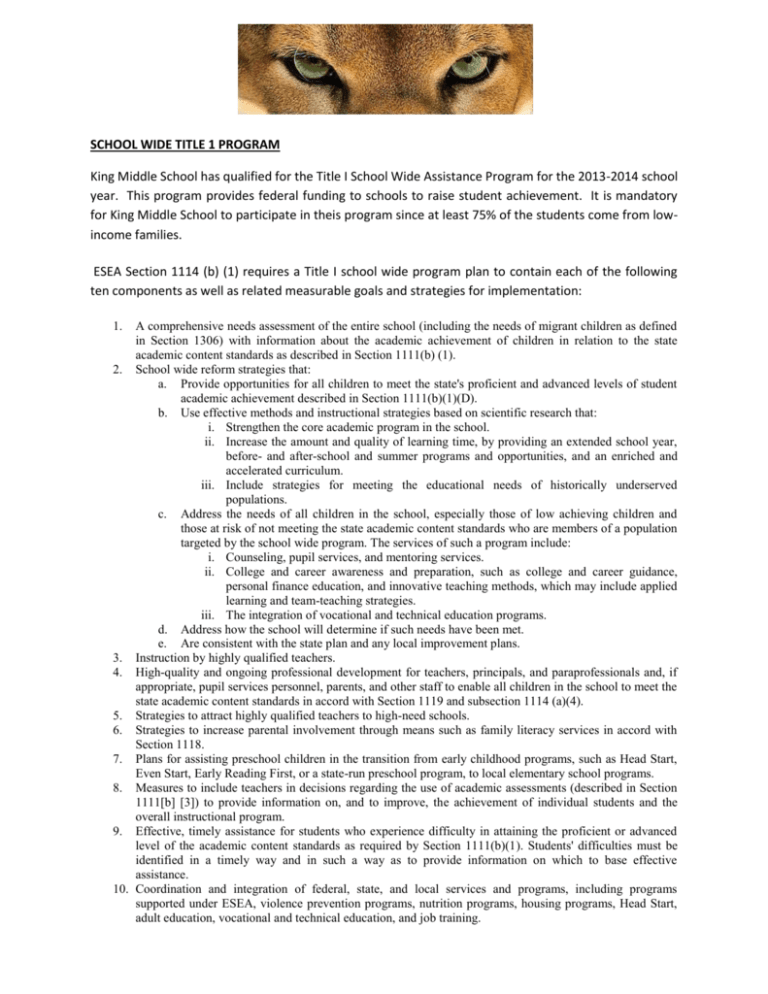
SCHOOL WIDE TITLE 1 PROGRAM King Middle School has qualified for the Title I School Wide Assistance Program for the 2013-2014 school year. This program provides federal funding to schools to raise student achievement. It is mandatory for King Middle School to participate in theis program since at least 75% of the students come from lowincome families. ESEA Section 1114 (b) (1) requires a Title I school wide program plan to contain each of the following ten components as well as related measurable goals and strategies for implementation: 1. A comprehensive needs assessment of the entire school (including the needs of migrant children as defined in Section 1306) with information about the academic achievement of children in relation to the state academic content standards as described in Section 1111(b) (1). 2. School wide reform strategies that: a. Provide opportunities for all children to meet the state's proficient and advanced levels of student academic achievement described in Section 1111(b)(1)(D). b. Use effective methods and instructional strategies based on scientific research that: i. Strengthen the core academic program in the school. ii. Increase the amount and quality of learning time, by providing an extended school year, before- and after-school and summer programs and opportunities, and an enriched and accelerated curriculum. iii. Include strategies for meeting the educational needs of historically underserved populations. c. Address the needs of all children in the school, especially those of low achieving children and those at risk of not meeting the state academic content standards who are members of a population targeted by the school wide program. The services of such a program include: i. Counseling, pupil services, and mentoring services. ii. College and career awareness and preparation, such as college and career guidance, personal finance education, and innovative teaching methods, which may include applied learning and team-teaching strategies. iii. The integration of vocational and technical education programs. d. Address how the school will determine if such needs have been met. e. Are consistent with the state plan and any local improvement plans. 3. Instruction by highly qualified teachers. 4. High-quality and ongoing professional development for teachers, principals, and paraprofessionals and, if appropriate, pupil services personnel, parents, and other staff to enable all children in the school to meet the state academic content standards in accord with Section 1119 and subsection 1114 (a)(4). 5. Strategies to attract highly qualified teachers to high-need schools. 6. Strategies to increase parental involvement through means such as family literacy services in accord with Section 1118. 7. Plans for assisting preschool children in the transition from early childhood programs, such as Head Start, Even Start, Early Reading First, or a state-run preschool program, to local elementary school programs. 8. Measures to include teachers in decisions regarding the use of academic assessments (described in Section 1111[b] [3]) to provide information on, and to improve, the achievement of individual students and the overall instructional program. 9. Effective, timely assistance for students who experience difficulty in attaining the proficient or advanced level of the academic content standards as required by Section 1111(b)(1). Students' difficulties must be identified in a timely way and in such a way as to provide information on which to base effective assistance. 10. Coordination and integration of federal, state, and local services and programs, including programs supported under ESEA, violence prevention programs, nutrition programs, housing programs, Head Start, adult education, vocational and technical education, and job training.
